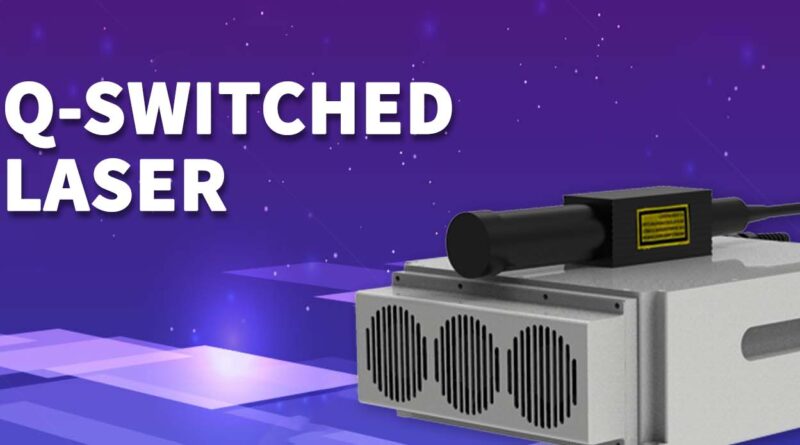The Power and Precision of Q-Switch Laser Technology
Q-switch laser technology stands out in the field of laser applications due to its ability to produce extremely high-energy pulses with remarkable precision. This innovative technology has transformed various industries by enabling advanced applications that require both accuracy and intensity. In this article, we delve into the workings of Q-switch lasers, their diverse applications, and the benefits they offer.
How Q-Switch Laser Technology Works
Q-switch laser technology operates on a principle that involves the rapid switching of the laser’s quality factor. This method, known as Q-switching, allows the laser to store energy and then release it in a short, intense burst. The result is a pulse of laser light with very high peak power, ideal for applications that demand precision and depth. By manipulating the Q-switch mechanism, operators can control the duration and energy of each pulse, making Q-switch lasers highly versatile.
The ability of Q-switch lasers to emit short, high-energy pulses makes them particularly effective in applications requiring precision. The high peak power and short pulse duration reduce thermal damage to surrounding tissues or materials, ensuring targeted and effective results. This feature is crucial in both medical and industrial settings where precision is paramount.
Applications of Q-Switch Lasers
Medical Treatments
Q-switch laser technology has revolutionized medical treatments by providing highly precise and effective solutions. In dermatology, Q-switch lasers are used to treat pigmented lesions, tattoos, and vascular conditions. The high-intensity pulses target specific pigments or blood vessels with minimal impact on surrounding tissues. This precision not only improves treatment outcomes but also reduces recovery times for patients.
Additionally, Q-switch lasers are employed in cosmetic procedures for skin rejuvenation. By inducing controlled thermal damage, these lasers stimulate collagen production, leading to improved skin texture and appearance. The ability to target specific skin layers without affecting the surrounding areas makes Q-switch lasers an invaluable tool in dermatological and aesthetic treatments.
Industrial Uses
In the industrial sector, Q-switch lasers are utilized for precision marking, engraving, and cutting. The high-energy pulses produced by Q-switch lasers enable detailed work on a variety of materials, including metals, plastics, and ceramics. This capability is particularly beneficial in industries where high accuracy and fine details are essential, such as aerospace, automotive, and electronics manufacturing.
For instance, in the automotive industry, Q-switch lasers are used to mark parts with barcodes or serial numbers, ensuring traceability and quality control. In electronics, these lasers facilitate micro-machining and component fabrication, where precision is critical for performance and functionality.
Scientific Research
Q-switch laser technology also plays a significant role in scientific research. The ability to produce short, high-energy pulses allows researchers to conduct experiments with high precision. In fields such as spectroscopy and microscopy, Q-switch lasers provide the necessary illumination for analyzing materials and observing phenomena at a microscopic level. Their versatility and precision make them essential tools for advancing scientific knowledge.
Advantages of Q-Switch Laser Technology
Precision and Accuracy
One of the primary advantages of Q-switch laser technology is its precision. The technology’s ability to generate high-intensity pulses with short durations allows for exact targeting and manipulation. This precision is crucial in medical treatments, where accuracy impacts patient outcomes, and in industrial applications, where detailed work is required.
Minimal Thermal Damage
Q-switch lasers produce short bursts of energy, which minimizes thermal damage to surrounding areas. This characteristic is especially beneficial in medical procedures, where reducing collateral damage is vital for patient safety and effective healing. In industrial applications, minimal thermal impact ensures that the material being processed retains its structural integrity.
Versatility
The versatility of Q-switch lasers is another significant advantage. These lasers can be adapted for various applications, from medical treatments and industrial processes to scientific research. Their ability to work with different wavelengths and pulse durations makes them suitable for a wide range of uses, enhancing their overall utility.
Challenges and Future Prospects
Despite their many benefits, Q-switch lasers face some challenges, such as the complexity and cost of the equipment. The sophisticated components and precise calibration required can make Q-switch lasers expensive to acquire and maintain. Additionally, the high peak power of these lasers necessitates careful handling and safety precautions.
Looking ahead, advancements in Q-switch laser technology are expected to address these challenges. Innovations may lead to more cost-effective and user-friendly designs, improved efficiency, and expanded capabilities. Ongoing research and development efforts will likely continue to enhance the functionality and accessibility of Q-switch lasers, broadening their applications across various fields.
Conclusion
Q-switch laser technology offers remarkable precision, versatility, and minimal thermal damage, making it a valuable tool in medical, industrial, and scientific applications. As the technology continues to evolve, its potential applications will expand, further demonstrating its impact and importance in modern advancements. By understanding and leveraging the capabilities of Q-switch lasers, industries and researchers can achieve unprecedented results and drive innovation forward.




